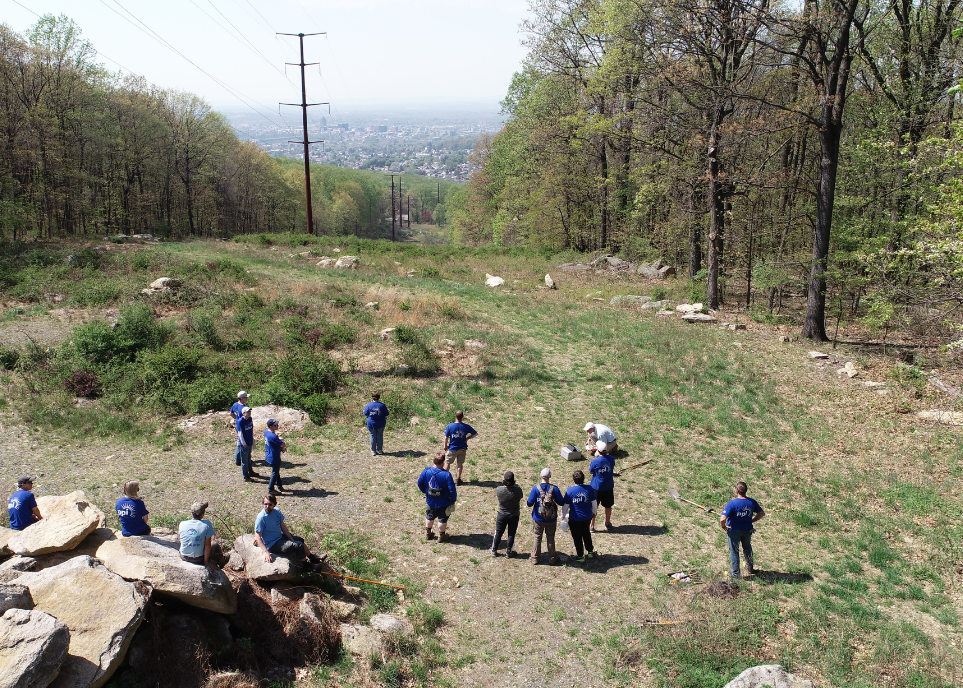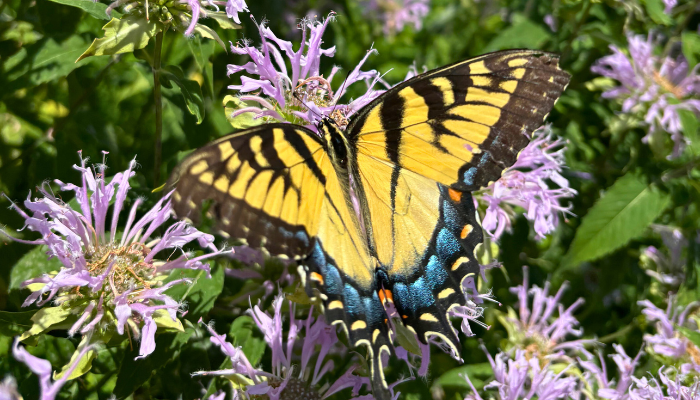Getting Here
Northwest entrance:
1300 Black River Road
Bethlehem, PA
Southeast entrance:
3390 Church Road
Bethlehem, PA
Download map
Download brochure: English
Activities:




This 187-acre sanctuary, is tucked away from cities nearby including Bethlehem and Allentown and is a convenient retreat for community members. A hike to the peak of the property by way of the Horizon Trail brings the Allentown skyline into view, readily contrasting the two landscapes: one busy and growing, the other protected forever as a public nature preserve.
Three distinct streams originate at the highest point here – Black River, Trout Creek, and a tributary of Saucon Creek – and trickle down the mountain through water-filtering forests to support clean water in the Lehigh Valley.
Horizon Trail | 0.7 miles | Difficult
Climb to the top of the mountain along this trail for overlooks of Allentown, Bethlehem, and the Lehigh Valley beyond. The steep hike is filled with rocks and boulders making the views even more worthwhile.
Mëkëke Trail | 0.2 miles | Easy
Lenape for meadow, this short trail strolls through native wildflower meadows and grasslands that highlight ongoing habitat restoration efforts.
Perseverance Trail | 0.5 miles | Difficult
This steep, rocky trail is a challenging alternative route to the mountaintop and requires perseverance to reach the top.
Promise Trail | 0.7 miles | Moderate
Traveling through meadows, grasslands, and rich forests, this trail showcases the many habitat types of Black River Sanctuary over a variety of terrain.
Spicebush Swallowtail | 0.6 miles | Difficult
Winding down from the peak of the preserve, this trail runs through towering overstory and thick understory vegetation. Keep your eyes open for the spicebush swallowtail butterfly that depends on the spicebush plant that comprises much of this understory.
Sustenance Trail | 0.6 miles | Difficult
The Sustenance Trail pays homage to the fact that this short loop can readily be done over your lunch break and a portion of it passes through a restored landscape with native, edible plants.
Queens Run Trail | 0.4 miles
This integral trail crosses the powerline to provide access to both sides of the preserve trail network while highlighting the dense oak and tulip forests.
Black River Sanctuary is home to a wide array of wildlife that includes deer, turkeys, small mammals, songbirds, and amphibians.
Nature preserve goers should keep a keen eye for evidence of porcupines: scratches on the trunks of trees! Those who are lucky might see these native, quill-armored animals and are advised not to approach or interact with them.
Pollinators, including monarchs, spicebush swallowtails, and bees are supported by multiple types of habitat at the sanctuary. One type of pollinator-supporting habitat that might not come to mind is wetlands, which also house amphibians here.
The sanctuary is wooded heavily with oaks, maples, tulip trees, and spicebush with an understory peppered with ferns. Its native grasslands are teeming with wildflowers including milkweed, bee balm, and asters. The edible shrubs along the Sustenance Trail support the same critters as the pollinator fields.
This sanctuary doubles as an outdoor classroom and field research destination for elementary through college students and nurtures career exploration in partnership with local groups and volunteer corps.
Visitors are encouraged to enjoy this space as an intersection of nature and art, noticing nature-inspired design choices, like tree-shaped parking areas and seasonal spectrums of flowers and grasses along the powerline right-of-way corridor.
– Wildlands Conservancy strongly urges nature preserve goers to wear blaze orange at our Black River Sanctuary
– Archery hunting for deer by permission only and only in certain ranges of the nature preserve
– No trapping
– Preserve is open from dawn to dusk
– No motor vehicles or horses
– Be respectful of neighbors and private property
– Do not damage, disturb, or harm any plants, wildlife, or geology
– No collecting of these natural resources
– Do not dump or litter; carry out all trash
– Pets must be leashed, under control at all times, and cleaned up after
– Be respectful of others using the property; quiet increases the chances of viewing wildlife
– No glass containers
– No camping or fires
– No alcohol or illegal drugs
Help protect our preserves!
It costs $400,000 a year to manage our
nature preserves. Give today to help!





